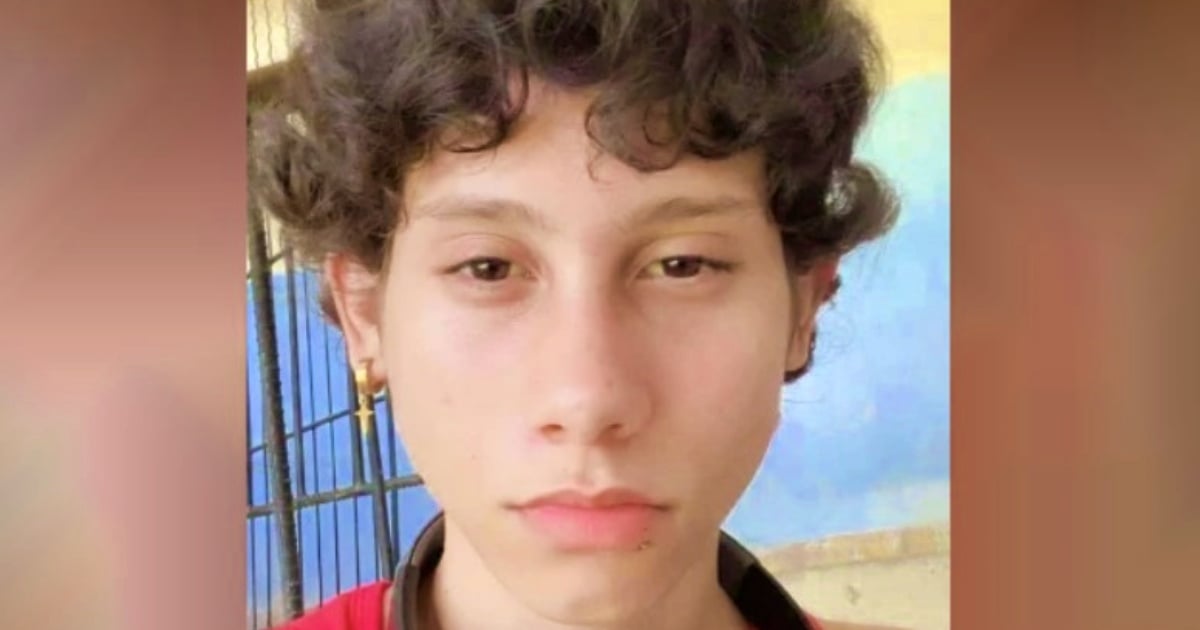In a heart-wrenching incident on Tuesday morning, a young Cuban, just 18 years old, ended his life in Santiago de Cuba. This somber news was shared on social media by journalist Yosmany Mayeta. The deceased, identified as Harold David Torres Rojas, lived in the Q block of the Micro 7 neighborhood in the José Martí district. Harold reportedly took his own life in the backyard of his home using a belt, a revelation that has profoundly shocked the community given the victim's young age.
The reasons behind Torres Rojas's drastic decision remain unclear, though some neighbors and individuals familiar with the case have shared various theories. His body is currently being held in cold storage as family members gather for a final farewell before his burial.
"He was our little neighbor. Loved by everyone. A good kid. I still can't believe what happened. It's very sad. We will carry him in our hearts. May God have him in a beautiful place. My condolences to his family and friends," expressed a neighbor in one of the many condolence messages. Another resident who knew him added, "Rest in peace, Davicito. I knew him; he was a good boy, and his father David is also a good neighbor and a great father."
"I taught him. Good boy," lamented an online commenter who claimed to have been his teacher. As of the time of this report, no further details have emerged about this tragic event.
The Silent Crisis: Understanding Suicide's Global Impact
Suicide is a complex and tragic phenomenon that affects millions globally each year. It involves the conscious decision to end one's own life, often due to overwhelming emotional or mental distress. According to the World Health Organization (WHO), over 700,000 people die by suicide annually, making it one of the leading causes of death worldwide.
Several factors contribute to suicide, including psychological, social, biological, and environmental elements. Key risk factors include:
- Mental Disorders: Depression, anxiety, bipolar disorder, and other mental health conditions are significant contributors. Approximately 90% of those who die by suicide suffer from some form of mental disorder.
- Socioeconomic Factors: Unemployment, poverty, debt, and social exclusion can increase risk levels.
- Family and Personal Factors: A history of physical, emotional, or sexual abuse, as well as family backgrounds with suicide, heighten the likelihood.
- Access to Lethal Means: Availability of firearms, pesticides, or other lethal methods significantly raises the risk.
- Social Isolation: Feelings of loneliness or social disconnection, and the absence of supportive networks, are critical triggers.
Recognizing Warning Signs
Several warning signs may indicate suicidal thoughts, including:
- Talking about wanting to die or feeling like a burden to others.
- Experiencing hopelessness and feelings of worthlessness.
- Displaying drastic changes in behavior, such as withdrawal from daily activities, social isolation, or apathy.
- Giving away personal belongings or settling affairs as if saying goodbye.
- Substance abuse, including drugs or alcohol.
It is crucial to take any comments or warning signs seriously, as many contemplating suicide may not explicitly seek help but may exhibit one or more of these symptoms.
Strategies for Suicide Prevention
Preventing suicide requires a comprehensive and multidisciplinary approach involving society, families, health professionals, and governmental policies. Effective strategies include:
- Mental Health Care: Promoting access to affordable and effective mental health services, including therapy and treatments addressing mental disorders.
- Strengthening Social Support: Building supportive networks, both familial and community-based, can be crucial for individuals feeling accompanied and understood.
- Restricting Access to Lethal Means: Eliminating or limiting access to lethal methods, such as pesticides or firearms, has proven to reduce suicide rates.
- Awareness Campaigns: Educating the public to reduce stigma associated with mental health issues and fostering empathy and understanding for those facing suicidal thoughts.
- Help Lines and Support Services: Telephone and digital assistance services can provide immediate support to individuals in crisis.
One of the greatest challenges in suicide prevention is the stigma surrounding it. Many individuals experiencing suicidal thoughts do not seek help due to fear of judgment or misunderstanding. Society must work towards creating an environment where people feel safe to discuss their mental health and receive the support they need.
Notice: If you or someone you know is experiencing suicidal thoughts, seek help and speak with a healthcare professional immediately.
